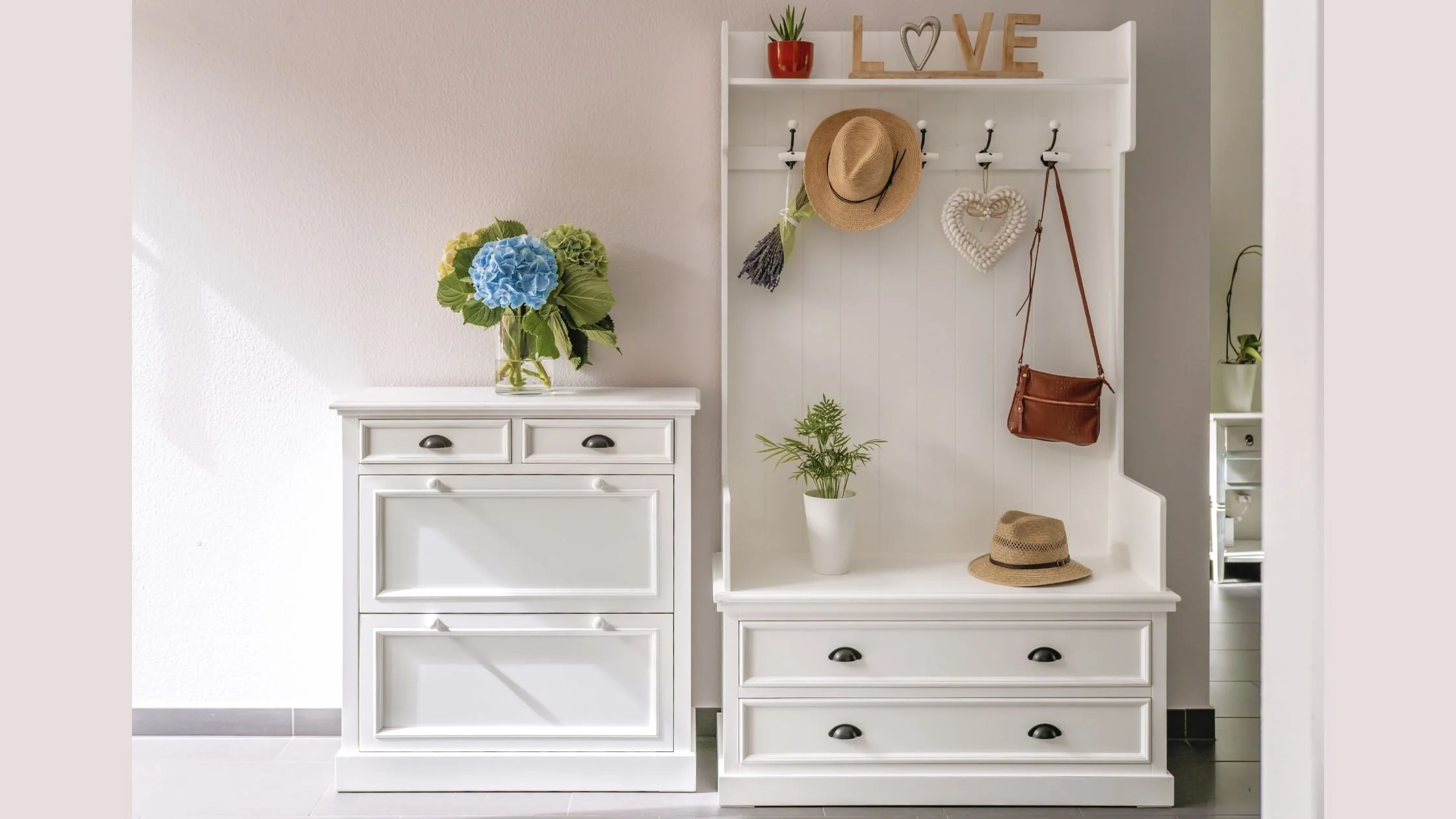The ADHD-Friendly Home: Organising Strategies for Neurodiverse Individuals
ADHD statistics in Australia - https://www.adhdaustralia.org.au
For individuals with ADHD, traditional home organisation strategies often fail. Methods that rely on strict categorisation, hidden storage, and detailed filing systems can quickly lead to frustration and overwhelm. ADHD impacts executive functioning, making it difficult to prioritise tasks, remember where things are stored, and maintain consistent routines.
The good news? By adapting home organisation strategies to support neurodiverse needs, it’s possible to create a space that enhances focus, reduces mental load, and promotes independence. In this guide, we’ll explore why conventional organising doesn’t always work for ADHD, the power of visual systems and structured routines, and small but high-impact changes that can transform a home into an ADHD-friendly space.
Why Traditional Organising Methods Don’t Work for ADHD
The Australian Psychological Society – ADHD executive function insights
1. “Out of Sight, Out of Mind”
Many organising methods focus on storing things neatly behind closed doors, but for people with ADHD, this often leads to forgetfulness. If something isn’t visible, it’s likely to be forgotten completely, leading to lost items, duplicate purchases, and unnecessary clutter buildup.
✅ ADHD-Friendly Solution:
Use open shelving instead of closed cabinets.
Clear storage bins with labels help maintain visibility.
Hooks and wall-mounted organisers keep everyday essentials in sight.
2. Task Paralysis & Overwhelm
Traditional organising methods often involve big, time-consuming projects, which can lead to task paralysis. Many ADHD individuals feel overwhelmed when facing large decluttering tasks, leading to procrastination.
✅ ADHD-Friendly Solution:
Break tasks into micro-goals (e.g., one drawer at a time).
Set 5-10 minute decluttering sessions instead of all-day projects.
Use gamification (set a timer, race against the clock).
3. Perfectionism & All-or-Nothing Thinking
ADHD brains often struggle with perfectionism. If they can’t do something perfectly, they may avoid it altogether. This makes maintaining an organised home challenging, as even small messes can feel discouraging.
✅ ADHD-Friendly Solution:
Focus on “good enough” organisation, not perfection.
Use flexible storage systems that don’t require perfect placement.
Allow for “messy zones”—areas where clutter is temporarily okay.
4. Time-Blindness & Memory Challenges
People with ADHD often struggle with time management and memory recall. This makes it hard to remember where things were put away, leading to disorganisation.
✅ ADHD-Friendly Solution:
Create designated drop zones for keys, wallets, and daily essentials.
Use labels and colour coding to help with item recall.
Keep frequently used items in high-visibility areas.
The Power of Visual Systems & Structured Routines
1. Visual Organisation: Seeing is Remembering
A well-organised home for ADHD individuals should rely on visual cues. Hidden storage systems create mental clutter, whereas open, visually structured systems help with recall and engagement.
✅ Key Strategies:
Use transparent containers for pantry items, office supplies, and clothing.
Label everything clearly—words, symbols, or colour-coded tags.
Hang visual task lists (e.g., whiteboards, sticky notes, digital reminders).
2. The Role of Structured Routines
For ADHD brains, routines reduce decision fatigue and help build predictable patterns. The key is to create flexible, low-maintenance systems that support consistency without feeling restrictive.
✅ Routine-Building Strategies:
Morning and Evening Resets: Spend 5-10 minutes tidying up before bed and after waking up.
Chunking Chores: Group similar tasks together (e.g., laundry & folding happen on the same day).
Timers & Alarms: Use auditory reminders to start and stop organising tasks.
3. Creating an ADHD-Friendly Command Centre
A home command centre is a central place to manage daily tasks, store important documents, and track schedules.
✅ What to Include:
A whiteboard or corkboard for notes, schedules, and to-do lists.
Baskets or trays for mail, keys, and other daily essentials.
Digital task lists (apps like Notion, Trello, or Google Calendar).
Small Changes That Make a Big Difference
1. Decluttering with the “5-Minute Rule”
Instead of marathon cleaning sessions, set a timer for 5 minutes and tackle one small task (e.g., clearing a counter or sorting mail).
2. Task Zoning & Dedicated Spaces
Create designated zones for different activities to reduce distractions.
✅ Examples:
A “focus area” for work or study with minimal clutter.
A “messy zone” for hobbies or crafts.
A “relaxation corner” with sensory-friendly elements (weighted blankets, soft lighting).
3. Adaptive Storage Solutions
Use baskets instead of drawers for easy access.
Pegboards keep items visible and within reach.
Colour-coded bins help with quick identification.
4. Sensory Considerations for Focus
Soft lighting to reduce overstimulation.
Noise-cancelling headphones or white noise machines.
Fidget-friendly organisation (e.g., stress balls near workspaces).
FAQs: ADHD & Home Organisation
1. What are the best ADHD-friendly organising tools?
Tools like clear bins, pegboards, magnetic labels, and whiteboards are excellent for ADHD-friendly organisation.
2. How do I maintain organisation when I struggle with consistency?
Use habit stacking, micro-tasks, and flexible systems that don’t require perfection.
3. Should I use a professional organiser if I have ADHD?
Yes! An ADHD-informed organiser can provide personalised strategies that work for your specific needs.
4. How can I prevent clutter from returning?
Adopt a “one in, one out” rule—for every new item you bring in, remove an old one.
5. What’s the best way to start decluttering when feeling overwhelmed?
Start with a single surface or drawer, set a timer for 5 minutes, and focus on progress, not perfection.
Conclusion
Creating an ADHD-friendly home isn’t about forcing traditional organisation methods to work—it’s about adapting strategies to support executive function, memory, and focus.
By incorporating visual organisation, structured routines, and sensory-friendly setups, neurodiverse individuals can enjoy a clutter-free home that promotes peace, productivity, and independence.
Need professional support to organise your home? Jo’s Beyond Organising offers trauma-informed, ADHD-friendly organising services—tailored to your needs. Contact us today!





